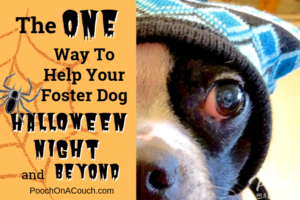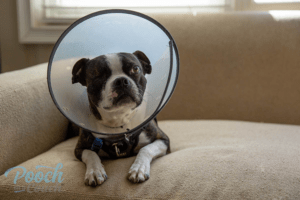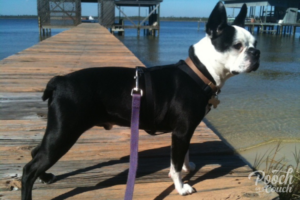Over the weekend, I wrote and wrote on my draft for this week’s blog post. It is National Poison Prevention Week, and I wanted to share my thoughts with you.
I started out talking about a few various problem toxins, like those in the Sago Palm, and my blog grew ridiculously long and ridiculously exclusive. How would I ever touch on all of the really bad poisonous items in our pet’s environment? There are too many.
I ditched the whole post and started over.
Poison prevention is important to me for a couple of reasons: 1) Foster homes experience accidental poisonings all the time and I want to do anything I can to reduce those occurrences and 2) I’ve experienced accidental poisonings more than once with pets in my home. It is scary, and once caused me to seriously doubt my ability to keep my animals safe.
More than 100,000 pets are accidentally poisoned each year
I wonder if 100,000 cases is a low number. I don’t know who calculated the total, but I imagine there are many cases that went unreported.
It is heartbreaking to think about the many pet owners who wait out veterinary emergencies to the detriment and suffering of their beloved pet.
The School Of Hard Knocks
Maggie And The Seed
I tell everyone I grew up with Boston terriers and Brittanys. In truth, there was a Pug in our family for a while. Her name was Maggie and she was a hoot. I don’t remember, but I’m pretty certain we got her as a puppy.
One afternoon the family returned home from an outing. In the hallway stood Maggie, trembling and “not acting right.”
I honestly do not remember if my mom whisked Maggie off to the vet right then or if she decided to wait it out, but Maggie ended up at the vet at some point, and she was dying.
Puppies Eat Stuff
The vet asked mom and mom asked me, “Do you remember her eating anything?”
I immediately shook my head “no” and then I did remember. Earlier that morning, I’d found Maggie chewing on something and I’d taken it out of her mouth. It was a seed out of a pod from the Wisteria plant in our yard.
That was it! Maggie was poisoned by seeds from a Wisteria plant.
The vet worked hard to save Maggie, and miraculously, she survived. The ordeal left her with left-sided facial paralysis. Drinking water was hard for her (her tongue didn’t really work right afterward) and she was the noisiest Pug I’d ever known.
I don’t know for sure if any preventive plan was put in place after this event. I don’t remember my parents digging out the plants or harvesting the seed pods. It is certainly something I recommend for anyone who has Wisteria plants growing on their property. The seeds are about the size of a butterbean, and as few as 5 seeds can be fatal.
Indy and Rodenticides
I was out of town helping to clean out a parent’s home after their passing. We started by combing the entire property for trays of rodenticide. We found dozens of trays of blue pellets everywhere.
Confident we’d disposed of them all, we allowed the dogs to hang out with us while we worked.
A Quiet Dog Is A Dog In Trouble?
We were in the garage moving items from one pile to another. Decluttering a space means making a bigger mess first, right?
Indy was a dog that stayed close by me and it didn’t take long for me to notice she was not at my feet.
I looked up and around, and saw Indy a few feet away, with her nose touching a tray of rat poison. I gasped. I had no idea if she’d eaten any.
How’d the heck did we miss this tray of poison?? We were so thorough.
I secured Indy, picked up the tray and stood there, befuddled for a moment. Having not purchased the product, I had no packaging and no idea how to look it up. I flipped the tray over and dumped the contents into the trash can.
There, on the underside of the tray, was a sticker with a 1-800 number.
I called the number, misdialing once as my nerves began to frazzle.
The woman on the other end of the line was knowledgeable and helpful while she asked me a few questions meant to triage this call. I told her I wasn’t sure if Indy ate any of the pellets, and I did not know which type of rat poison it was. The woman asked me if I still had the tray and if so, to look at the label on the underside. “The label’s information should include the active ingredient. Tell me what it is.”
I told her the ingredient listed on the label and she went radio silent for what seemed like an eternity. When she spoke, her voice was direct and I detected fear: “Take your dog to a veterinarian, NOW. Do not wait.”
Out Of Town Blues
I was out of town, I didn’t have Indy’s vet records with me, and it was Saturday afternoon. In this particular county, not a single veterinarian clinic was open. The veterinarians in this county all support a 24-hour emergency phone service and, depending upon which veterinarian is on call, you may or may not get a quick call-back.
The nearest animal ER’s were an hour’s drive in either direction.
I felt a little queasy with my “what if” questions.
I took a chance on the 24-hour service with plans to get in the car in 10 minutes if no one called me back.
I got lucky – really lucky, and the on-call vet answered the phone immediately, heard our crisis, and gave us directions to his clinic, a 20-minute drive.
No News Is Good News?
We met Dr. Flowers in the parking lot. He wasted no time, asking more questions to fully understand the situation. He let us know that the rat poison Indy found was one of the most dangerous poisons on the market. I was so scared! He outlined what the treatments we could expect depending upon how much if any, poison Indy ate.
All the while, Indy is alert, not vomiting, and behaving normally.
Dr. Flowers began by inducing vomiting in Indy. Using a fat syringe filled with hydrogen peroxide, he carefully and with precision made Indy swallow the liquid. Poor thing! It took two doses of peroxide before Indy began to finally wretch up the contents of her stomach.
What came out of her gut was good (but not conclusive) news – she threw up hydrogen peroxide, nothing more! Dr. Flowers said that while it didn’t mean she didn’t eat any poison, the fact that there wasn’t any blue dye in her gut was encouraging.
We proceeded to complete in-house bloodwork and I witnessed my very first jugular blood draw! Um. That was scary!
Since Dr. Flowers didn’t have his veterinary staff with him, I was asked to assist him. He taught me how to properly hold Indy so he could insert a needle into the vein in Indy’s throat. My hand on Indy’s chest, he looked at me and warned, “Don’t move.” He jabbed that needle into the vein, drew blood and was done before I could blink.
The blood panel came back perfect. More good, but inconclusive news. We still didn’t know for certain that Indy had or had not ingested rat poison. It was agonizing as we struggled with which decision to make; move her to an ER, or take her home and observe her there.
Indy is still alert, behaving normally, although she’s a little miffed about the hydrogen peroxide.
Indy came home with me for observation. She remained fine, and I believe that she never ingested any of the poison pellets because I caught her in the nick of time. But it could have been so much worse!
Accidents Are Going To Happen
I’ve thought of that crisis often. We’d worked hard to clear the property of rodenticides. We’d triple-checked, and still, we missed one tray of that evil stuff. It was an error that could have been quite costly or worse. I know I wasn’t careless, I was human. Still, I beat myself up over it for a while.
If I learned anything, it is to choose all my products with care. I, of course, choose to not use rodenticides, but I am also careful about how I store produce, which landscape plants I purchase, how I store automotive supplies, and more.
Dogs do not have a discriminating palate, they will eat things that taste good to them. Our job is, best we can, to keep ourselves as informed as possible about the poisons that lurk in our pet’s environment and reduce our pet’s exposure to the risk.
The ASPCA has a large database of poisons. I encourage you to bookmark the page. If you have a doubt about the toxicity of an item, LOOK IT UP.
Otis and Onions, Grapes, and Mushrooms
I’m now a pro at inducing vomiting in dogs. Thanks, Otis!
My dog, Otis is a Hoover dog. He will eat anything. I’ve considered training him to a muzzle. You’ll see why.
Once, he jumped on the kitchen counter and ate the entire contents of my produce bowl. 2 cucumbers, a potato, 4 bananas, and an entire garlic bulb. Fixing him up after that was fun. And messy!
I’ve since relocated the produce bowl.
He once ate a fistful of grapes off of a napkin when I wasn’t looking. During this event, I learned that hydrogen peroxide has a pretty short shelf life, and you need fresh peroxide to efficiently induce vomiting.
I now threaten house guests with the task of shoving hydrogen peroxide down Otis’s throat if they mismanage their food. Kidding, but if you come to stay with me, you will get a warning!
Otis forages for mushrooms whenever he gets a chance. I have discovered many different varieties of mushrooms in my back yard. Do you know how hard it is to identify mushroom varieties? It’s nearly impossible, in my experience.
There’s one particular mushroom in the yard that caused Otis quite a bit of gastrointestinal upset. It was tiny and grew in clusters at the root ball of one of my cryptomeria trees. I was never able to identify just how toxic it was, but I knew it was bad enough to give him pretty bad diarrhea. It took me a minute to finally eradicate it from my yard.
I now walk my yard nearly every morning to clear the fenced area of the day’s crop of fungi before Otis is allowed outside, wishing I had a great resource for mushroom identification or at least that my yard would sprout chanterelles on occasion!
Use National Poison Prevention Week
My challenge to you is this: set a goal to learn about your pet’s environment and to begin to identify the toxins that are probably there:
- Make a list of all of the plants in your yard and research them. I have azaleas, daylilies, and yew that are potential problems for my pets. Oh. and those pesky mushrooms!
- Learn about foods that your pets shouldn’t eat and evaluate if you need to store those foods differently.
- Learn to read labels – look for xylitol hidden in packaged foods.
- Do some research on your household and automotive products and evaluate how you store those products.
- If you have to use pesticides, learn all about the risks to your pets and protect them.
- If you use essential oils, please work with a reputable distributor who is an expert with using oils around pets.
- Don’t forget to think about animals that carry toxins – venomous snakes or frogs, for example. I live in an area where copperheads are frequently sighted. I’ve learned about their habitats and activity patterns, and I modify my dog’s freedoms at times when snakes are more active.
- Think about your emergency plan, both at home and when traveling. Know where vet records are and where your emergency numbers are kept.
- Learn how to induce vomiting, but don’t do it until your vet gives you the go-ahead over the phone. Sometimes, it’s safer to just get to the vet clinic for treatment.
I'd love to hear from you -
How are you using National Poison Prevention Week to make your world safer for you, your family, and your pets? Share your ideas. I ‘d love to hear from you.




